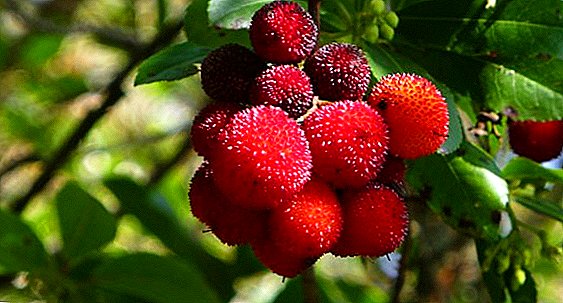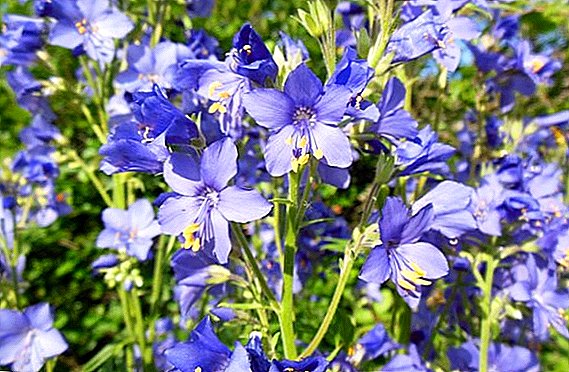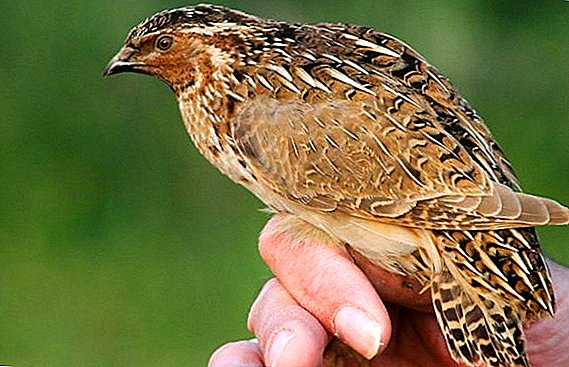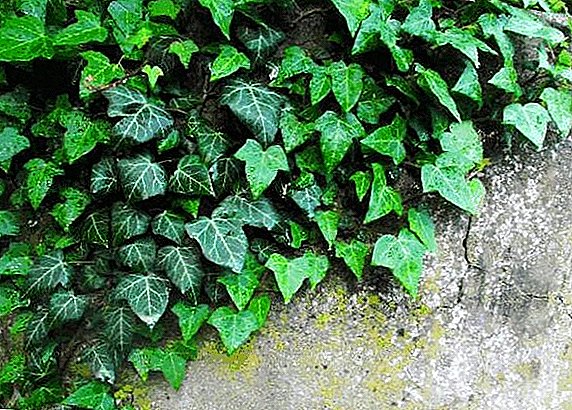 Many of you have seen thick climbing vines adorning the walls of houses and forming hedges. This beautiful ornamental plant is called garden ivy. It is curious that it was one of the symbols of ancient Greece, denoting fun and love, and the poets decorated their heads with ivy wreaths during the celebrations. Let us and we will learn more about this plant.
Many of you have seen thick climbing vines adorning the walls of houses and forming hedges. This beautiful ornamental plant is called garden ivy. It is curious that it was one of the symbols of ancient Greece, denoting fun and love, and the poets decorated their heads with ivy wreaths during the celebrations. Let us and we will learn more about this plant.
Description
Garden ivy belongs to liana-like perennial evergreens of the Araliae family. It is a creeping shrub that clings to its various objects and surfaces with its numerous sopic-like adventitious roots.
On its stems are dense leathery green leaves of various shapes and shades. Small yellow-green flowers are collected on the tops of branches in brushes and inflorescences, umbrellas. The plant blooms in the first half of autumn, and its fruit is a dark berry with a few blue seeds with a blue shimmer. It matures in winter and is a good feed for birds. For a man, this berry is not just absolutely inedible, but also poisonous. 
It is widely found in Australia and in the areas of the Northern Hemisphere and can grow to a height of thirty meters.
Did you know? Many Christians see garden ivy as a symbol of loyalty, life and immortality. Perhaps this particular plant will allow you to move away from the hustle and bustle and pressing problems and tune in a philosophical way.
Types of ivy garden
In nature, there are about a dozen of its varieties, the most famous of which are:
- Colchis ivy (Hedera coichica). The plant has large opaque dark green leaves, the width of which reaches 17 cm, and the length is up to 20 cm. The leaves have a different shape and have a specific smell with a nutmeg shade, which manifests itself during rubbing. Flowering occurs in autumn. Flowers that do not represent decorative value are collected in brushes on peduncles up to 3 cm long, the length of flower petals reaches 4.5 mm, and width - 2.5 mm. Fruit ripening occurs in the spring of next year. The most popular forms of Colchis ivy are dentate, purple and tree. The plant can grow up to 30 meters and is found on the Black Sea coast of the Caucasus;
- Common ivy (Hedera helix). This plant reaches a height of one meter. It has leathery, shiny leaves with a lot of decorative variations of various colors and shapes - winter form with large light, palmate with large five-bladed, Baltic frost-resistant with small, bordered with a yellow border and others. It blooms just like Colchis ivy. Occurs in the lowlands and foothills of southern Europe, Southeast Asia and Russia. Considered one of the most cold-resistant species;
- Shepherd's ivy (Hedera pastuchowii). The plant can grow up to 10 meters long. It has thin leathery bright green leaves up to 10 cm long and up to 6 cm wide. Their shape differs by a great variety - from lanceolate to rounded-heart-shaped, with wavy-angular or whole edges. Found on the territory of Azerbaijan, Georgia, Dagestan.



Room ivy is one of the most common indoor plants, which is often planted with fuchsia or pelargonium. Especially popular because of the variegated leaves is Canadian ivy.
As for other varieties, Thorndale and Modern Times are characterized by active growth, which allows them to be used in vertical plantings. The varieties Sally, Deltoidea and Tripod exist in both curly form and form dense bushes. This feature allows you to use them both in vertical gardening and in a pot. They quickly grow and form lush hedges up to two meters high.
Compact species like Dealbata, Henriette, Jubilee and Very Merry are great for covering alpine slides. A wide palette of their forms and shades will decorate any rock garden and will allow you to create your own unique style in it.

Cultivation and care
In order to grow a beautiful ivy, you need to choose the right sapling. When buying, pay attention to the fact that the plant has a strong spreading rhizome and shiny, succulent leaves. A seedling with faded roots and yellowed leaves is better not to acquire.
Lighting
Ivy does not like the open area. Try to plant it in the penumbra, can be in the shade of the crown of a large tree. This is especially important in a cold climate, because the correct location will help the plant to safely survive the winter. In addition, this place should be relatively quiet, without strong winds.
Important! In early spring, do not rush to prune shoots after wintering, it is better to do this in early summer after the end of the active movement of the juice. Sections on large stems need to process garden pitch.

Temperature
In the first two years, the plant does not develop too quickly, so it is better to plant it in spring, so that during the warm period of the year it can grow and consolidate as much as possible. It is also worth noting that in cold areas, ivy usually does not reach a great height, since the part covered with snow may not survive the winter frosts. Therefore, expect that it will be able to cover only low-lying surfaces.
At home, it likes cool rooms with a summer temperature of about 18 degrees Celsius, and winter - 6 - 12 degrees Celsius. The plant responds normally to sudden fluctuations in temperature and drafts, so the best place for it is a glazed balcony or loggia.
The soil
Plants are planted in the spring in moist fertile soil containing humus and lime. Landing requires a moisture-absorbing, breathable ground. Loamy slightly acidic soils are well suited, but in clayey plants they do not take root, because there is practically no access of oxygen to the roots. In addition, the clay has the property to retain moisture, and its excess is detrimental to ivy.
Read about what types of soil exist and how to fertilize them, as well as what is and how to determine the acidity of the soil.
To care for the soil is enough simple loosening, it should be carried out carefully so as not to hurt the roots. Preparing the soil for the winter and preserve the precious moisture will help mulching with humus from leaves or peat.

Watering
Ivy is a moisture-loving plant, the poet needs to ensure that the earth is constantly wet, and, if necessary, water extra. However, do not forget that an overabundance of moisture in the soil can lead to the death of the plant. As a rule, in the hot season, watering should be 1 - 2 times a week, and during the autumn period, watering should be reduced.
If ivy grows in room conditions, then when wintering in a warm room, watering should also be frequent. In addition, you should periodically wash its leaves. This will not only have a beneficial effect on the plant itself, but also will not allow dust in the house.
Humidity
Ivy carries dry air heavily, its leaves dry out and die off in low humidity. Therefore, at home at a temperature above 20 degrees Celsius, it is necessary to additionally humidify the air, and the plant should be sprayed regularly. If you do not have a special humidifier, you can put a wide container with water in the room.
Read about the intricacies of caring for other garden vines: girlish grapes, petiolian hydrangea, clematis, wisteria, honeysuckle capricoleum, passionflower, woodcutter, actinidia, ipomey, Chinese lemongrass, sweet peas, tunbergia, Kampsis, calistegy.

Top dressing
For garden ivy to grow faster and please you with a rich crown, it should be fed in the warm season once or twice a month. For this purpose, water-soluble nitrogen fertilizers are well suited, thanks to which new strong shoots with shiny and healthy leaves will appear more actively.
Since mid-summer, it is necessary to feed the plant with fertilizers with a high content of phosphorus and calcium. They will help him to strengthen and prepare for the winter.
Breeding
Garden ivy rather easily propagated by cuttings and branches. Experienced gardeners advise doing this in spring or early summer. The main thing is to choose only healthy specimens for breeding.
Cuttings
Cuttings are cut in spring or summer from young shoots not older than three years. To plant a new plant, the stems with a tip about 10 cm long (but not more than 15 cm) are cut, four lower leaves are removed and the stems are placed in water for a third of its length. After some time, they take roots and planted in open ground.
You can immediately plant the cuttings in boxes with a mixture of garden soil and sand. Typically, the formation of the roots necessary for planting, takes from four to six weeks.

After which the seedling is planted in a selected area to a depth of about 20 cm, drainage is provided at the bottom of the pit. The distance between plants should be 30 - 60 cm, after planting they are watered, and the soil is mulched. For winter, young specimens should be covered with spruce leaves or leaves.
Important! Ivy is a poisonous plant, so all work on his care, especially pruning, must be carried out with gloves. If his juice still gets on the skin and there is itching, swelling, or other negative reaction, immediately consult a doctor.
Grazing
This method is well suited if you plan to form a solid green curtain along one surface. In this case, it is better to use dropping. To do this, choose a long healthy stem, make a small incision, this place is attached to the ground with a special bracket and sprinkled with earth.
After some time, ivy will take root and form into a separate plant. If necessary, you can carefully separate it from the main plant and transplant it to another place.
Diseases and pests
Major diseases and pests of garden ivy:
- The main pest of garden ivy is considered spider mite. As a result of a lesion, the plant is covered with a spider's web, along which small whitish, yellow or red bugs move. This usually happens on ivy growing on the sunny side. Plants are treated with the drug "Actellic", which is diluted in water according to the instructions and process the leaves once a week. This procedure should be repeated until complete destruction of ticks.
- Excessive soil moisture can damage the plant with fungus. As a result of this, dark areas appear on the leaves, they begin to dry and fall off. In this case, it is necessary to remove the affected leaves and stems, process the plant with fungicidal preparations.
- Too high temperature in the room can lead to damage by the shield. Outwardly, this is manifested by a bright sticky bloom on the leaves, then gradually growing yellowish specks appear on them, which lead to a complete falling off of the leaf. In this case, the damaged stems should be cut, and the ivy itself should be moved to a cooler place.
- One of the pests of ivy is aphid. To get rid of it, the plant is treated with an insecticide ("Aktellik", "Karbofos", "Aktara" and others). Try not to miss a single leaf or escape, otherwise the remaining aphid will quickly spread throughout the plant.


You can fight with spider mites and folk methods: infusion of garlic, onions, dandelion, decoction of cyclamen tubers.


- lack or excess of moisture leads to yellowing and falling leaves;
- small leaves, too elongated and weakly leafy stems talk about the lack of sunlight;
- brown and dry tips talk about too high temperature and low humidity.
Did you know? Garden ivy is a perennial plant that, under favorable conditions, can reach 200 years of age. Moreover, in the southern part of Europe there are separate instances of it, whose age has exceeded 450 years, and the shoots have grown to 100 meters.
Use of ivy garden
The two main uses of ivy are garden design and traditional medicine, where its leaves are used to treat a wide range of diseases, including rickets and chronic inflammation of the mucous membranes. Plush has anti-inflammatory, antibacterial and anti-fungal properties.
Its alcohol tincture is used to remove warts, and fresh leaves are used as an external remedy for dressing wounds and for burns. By the way, official medicine also recognizes the usefulness of this plant and uses it as an ingredient in cough medicine.
Learn more about the healing properties and contraindications of ivy.

As for the design, with the help of this plant you can create interesting compositions of horizontal and vertical gardening. It can cover any stone, plastered or brick wall of a building with a lush green cover. And in the fall, when the leaves change their color to different shades of red, yellow and orange, the walls will look especially impressive. In addition, the plant is the ideal material for the realization of any small architectural forms. The small arbors or figures, made of a wire frame, are entwined with garden ivy planted next to each other. Do not forget about regular haircut to maintain the desired shape.
With the help of ivy, you can decorate a gazebo, pergola, swing, veranda.

How to remove ivy
Sometimes the question arises how to remove this plant, for example, from the garden. As ivy grows very quickly, it begins to interfere with and clog other plantings. In addition, if there are children in the house, then there is a need to protect them from the poisonous berries of ivy. So, what you need to do:
- using ivy shears, remove ivy from the support;
- shears or a hacksaw, if the shoots are too thick, cut off the main part of the ivy near the soil surface;
- dig and dispose of rhizome, do not leave shoots, otherwise they will quickly take root;
- When young shoots appear, use the Tornado herbicide.













